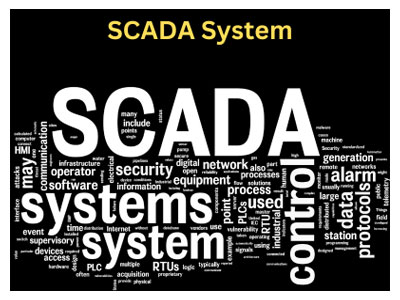Key Takeaway
SCADA implementation comes with several challenges. One common issue is system integration. SCADA needs to connect with various devices, like PLCs and RTUs, which may use different communication protocols. Ensuring seamless compatibility between these components can be complex and time-consuming.
Another major challenge is cybersecurity. As SCADA systems become more connected, they are vulnerable to cyber threats. Implementing strong security measures, like firewalls and encryption, is essential but can be costly. Additionally, scalability is often a concern. Expanding SCADA systems to accommodate future needs may require significant hardware and software upgrades. Other challenges include high initial costs, the need for skilled personnel, and ongoing maintenance. Proper planning and expert support can help overcome these obstacles for a successful SCADA implementation.
Integrating SCADA With Existing Systems
Integrating SCADA into an existing setup is often the first major hurdle. Many industries already have legacy systems in place, and aligning these with modern SCADA technologies can be tricky. Mismatched protocols, outdated hardware, and incompatible software can create integration bottlenecks.
For example, older manufacturing plants might rely on proprietary communication protocols that do not seamlessly align with SCADA systems. This mismatch can lead to data loss, operational delays, or incomplete visibility of the process.
A structured approach can help here. Conducting a thorough assessment of existing infrastructure, identifying compatibility issues, and planning gradual integration are crucial. Using middleware or gateways can also act as a bridge between incompatible systems. Keep in mind that successful integration isn’t just about connecting components—it’s about ensuring that they work together to provide a unified operational view.

Addressing Cybersecurity Risks in SCADA Deployment
Cybersecurity is one of the most significant concerns in SCADA implementation. Because SCADA systems are often connected to external networks for remote monitoring, they are vulnerable to cyberattacks. Threats such as ransomware, data breaches, and unauthorized access can disrupt critical operations.
For example, in the energy sector, a compromised SCADA system can lead to widespread blackouts or safety hazards. Hackers often exploit outdated software or weak authentication measures to infiltrate the system.
To address these risks, industries must prioritize security measures during implementation. Firewalls, intrusion detection systems, and multi-factor authentication can significantly reduce vulnerabilities. Regular software updates and patches are essential to address emerging threats. Training employees on best cybersecurity practices also helps in maintaining a secure SCADA environment.
Remember, cybersecurity isn’t just an IT responsibility; it’s a collective effort that requires attention at every level of the organization.
Managing Costs and Resource Requirements
Implementing SCADA systems can be an expensive endeavor, especially for small and medium-sized businesses. The initial investment in hardware, software, and integration services is often substantial. Additionally, operational costs like maintenance, licensing, and training can strain budgets.
One common pitfall is underestimating the total cost of ownership. For instance, while opting for a low-cost SCADA solution might seem appealing, hidden expenses such as limited scalability or frequent breakdowns can inflate costs over time.
To manage resources effectively, it’s essential to prioritize long-term value over short-term savings. Evaluate multiple SCADA solutions, considering factors like scalability, reliability, and vendor support. Additionally, adopting cloud-based SCADA can help reduce capital expenditures, as it eliminates the need for costly on-premise infrastructure.
By carefully planning the budget and allocating resources wisely, industries can avoid financial strain and achieve sustainable SCADA implementation.
Ensuring Scalability and Future-Proofing SCADA Systems
One challenge often overlooked during SCADA implementation is scalability. Industries are dynamic, and their needs evolve over time. A SCADA system that works perfectly today might become obsolete as operations expand or new technologies emerge.
For example, a manufacturing plant may initially deploy SCADA to monitor a single production line. Over time, as additional lines are added or automation increases, the SCADA system must scale to accommodate the new workload. Systems that lack scalability can lead to operational inefficiencies or require costly upgrades.
Future-proofing SCADA systems involves choosing platforms that support modular upgrades and emerging technologies like IoT and AI. Open standards and flexible architectures are crucial to ensure compatibility with future advancements.
Regularly reviewing the system’s performance and aligning it with organizational goals can also help in identifying and addressing scalability concerns before they become critical.
Overcoming Technical Expertise Gaps in SCADA Operations
Implementing and managing SCADA systems requires specialized technical expertise, which is often a challenge for organizations. Many industries struggle to find skilled personnel who understand both the operational and technical aspects of SCADA.
For instance, setting up a SCADA network involves configuring communication protocols, designing user interfaces, and integrating hardware—all tasks that require in-depth knowledge. Similarly, troubleshooting and maintaining the system demand a solid understanding of both software and industrial processes.
To bridge this gap, investing in workforce training is essential. Engineers should be trained on SCADA basics, cybersecurity measures, and troubleshooting techniques. Collaborating with vendors for support and leveraging their expertise can also help in overcoming technical challenges.
Additionally, industries should consider implementing user-friendly SCADA systems with intuitive interfaces. This reduces the learning curve and empowers operators to manage the system effectively without relying heavily on external support.
Conclusion
SCADA implementation, while rewarding, comes with its own set of challenges. From integrating with existing systems to addressing cybersecurity risks and managing costs, each step requires careful planning and execution. Ensuring scalability and addressing technical expertise gaps are equally critical to achieving long-term success.
For engineers entering this field, understanding these challenges is the first step toward mastering SCADA systems. By adopting a proactive approach and prioritizing workforce training, industries can unlock the full potential of SCADA, paving the way for efficient and secure operations
